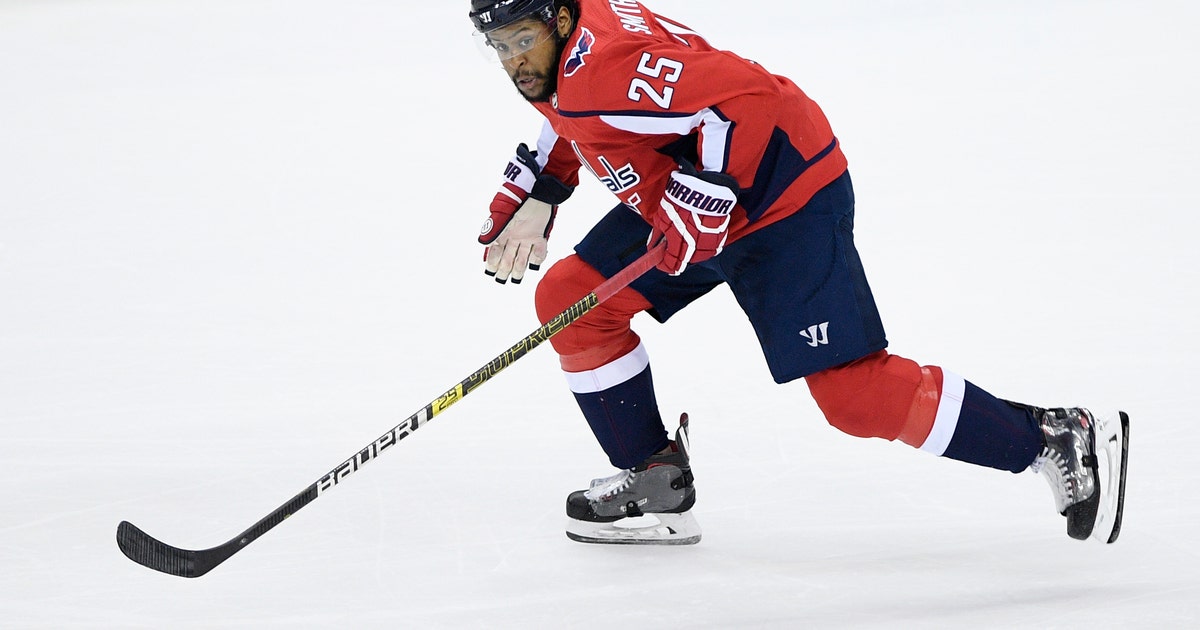Salary cap economics squeezing out NHL’s middle class


Stanley Cup-winning experience isn’t worth what it used to be. Neither is experience of any kind.
As NHL teams move toward paying their stars more money and relying on young players to fill the gaps, hockey’s middle class is being squeezed out. Veterans like 2018 Washington Capitals playoff hero Devante Smith-Pelly are finding it increasingly difficult to land guaranteed contracts and are often forced to go to training camp on professional tryout agreements, which cover potential injuries at camp and not much else.
Hockey perhaps more than any other professional sport has put a premium on veteran players over the years. Guys who have been there before, have some grey in their beards and are valued at least as much for team chemistry in the locker room as they are for what they do on the ice.
Adding the salary cap in 2005 began the process of devaluing these so-called “glue guys” because there is only so much money to go around. This year, that cap is $81.5 million for a team and there is no wiggle room — teams are not allowed to play if they are over the limit.
“It’s sad because these veteran players are monumental to the team,” St. Louis Blues center Ryan O’Reilly said. “Especially these guys that have won, too, like Devante Smith-Pelly. He’s been in every situation. He’s a guy that you’d want to have because he’s going to help and he’s been in these situations. When it comes around again, it’s not going to faze him.”
Smith-Pelly and Andrew MacDonald in Calgary, Troy Brouwer in Florida, Matt Read in Toronto and Drew Stafford in Minnesota are among the experienced NHL players on camp tryouts this year. Even more are settling for one-year, prove-it contracts like 2019 Cup winner Patrick Maroon (31 years old) and defenseman Kevin Shattenkirk (30) with Tampa Bay, Derick Brassard (31) with the New York Islanders, defenseman Ben Hutton (26) with Los Angeles and forward Riley Sheahan (27) with Edmonton.
Shattenkirk went from making $7 million last season with the Rangers to a one-year contract worth $1.75 million.
“There’s something for me to prove,” Shattenkirk said. “I think I have a huge chip on my shoulder right now.”
This is all related to how the salary cap is managed.
Across the league, there are 32 players who chew up 10% or more of his team’s $81.5 million salary-cap space — with more potentially on the way when Colorado’s Mikko Rantanen and Winnipeg’s Patrick Laine sign deals. For example, Connor McDavid accounts for over 15% of Edmonton’s cap space.
It is a trend that shows the value of elite talent but it means there is less money to go around for complementary players who are not on entry-level contracts. A handful of players also have expressed concern that restricted free agents are making more out of their entry-level contracts than ever before, further scrambling available money for support players.
“Teams, they want to take a shot on a young guy that has got an upside they see,” O’Reilly said. “It’s tough because there’s so many good players out there that aren’t getting jobs because of it.”
Chicago’s Jonathan Toews, 31, and Patrick Kane, 30, eat up almost 26% of the Blackhawks‘ cap space. They combined to win the Stanley Cup three times, but their deals and rich ones given to defensemen Duncan Keith and Brent Seabrook tend to be blamed for a lack of depth in Chicago, which has missed the playoffs the past two seasons.
Toews said he understands the economics of the league aren’t getting any easier for players as they get older.
“It’s tough,” Toews said. “It just goes to show you can’t take anything for granted, even though you’ve been in the league or you’re a proven player at this level. You start getting into your 30s … you realize that the league’s only going to get younger, it’s only going to get stronger, it’s only going to get better.”
It’s not just older players, either. Smith-Pelly is 27, Joe Morrow is 26 and trying to make the Rangers and fellow defenseman Alex Petrovic is 27 as a long shot to get a contract with Boston.
Grinding forward Garnet Hathaway played the past two seasons on one-year deals in Calgary making under $1 million each year. He went into free agency a bit nervous but was able to land a four-year, $6 million contract and some security with the Capitals, who also signed Brendan Leipsic to a one-year deal and Richard Panik for four years after each player had bounced around the league.
“Contracts are hard to come by in this league,” Hathaway said. “It’s such a competitive league. Guys I know personally that have gone through it, they’re some of the most competitive guys. It’s guys who have played in this league a long time and have great careers. You wish them the best of luck, but it’s competitive.”









